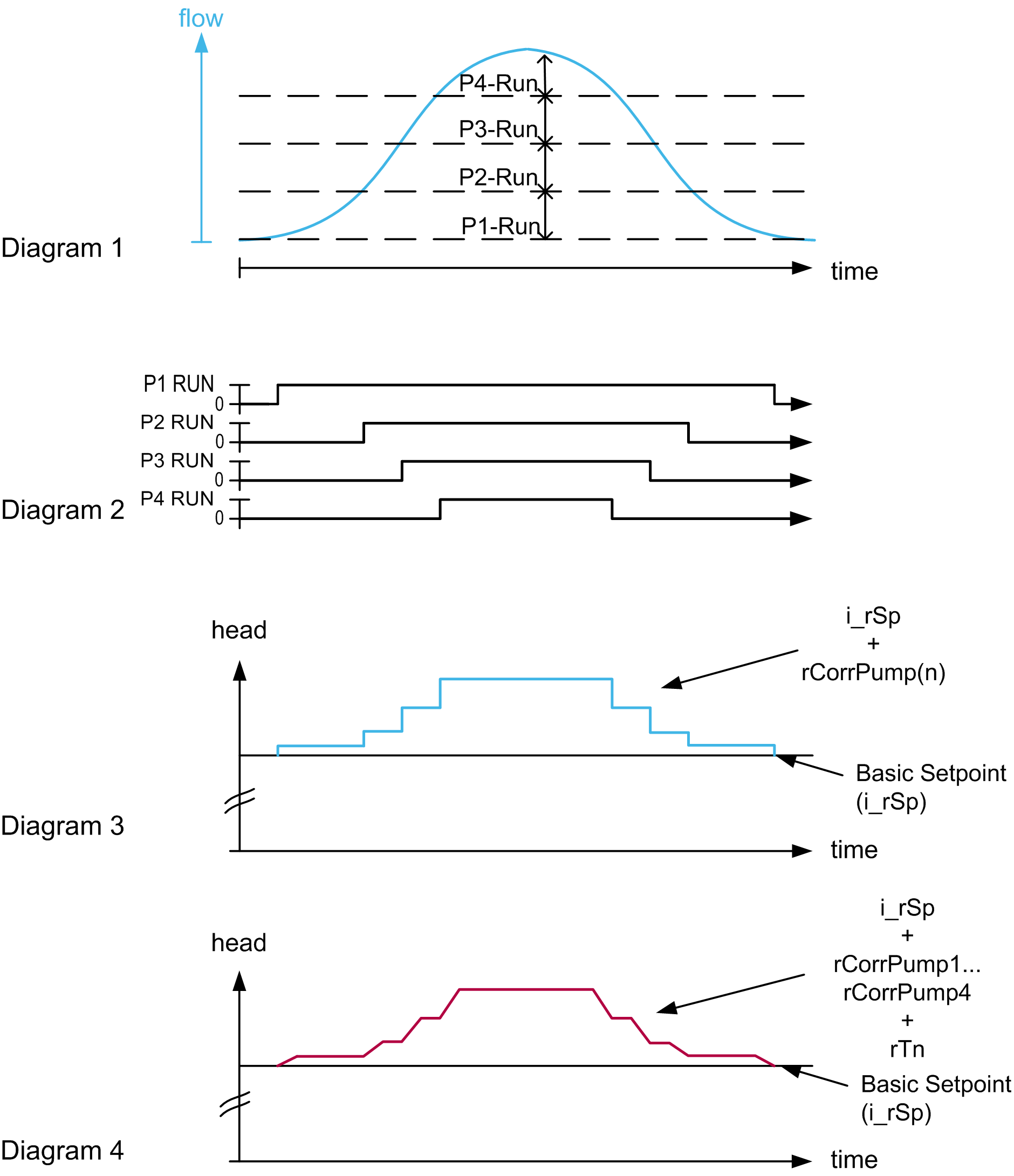In order to help to compensate for friction loss, the CompSp function block adapts the pressure setpoint (i_rSp) after a change of the stage value (i_stStagVal) provided by the PumpPidStag function block has been detected.
The following criteria are considered for recalculation of the pressure setpoint:
othe demand of the number of pumps (as indicated by the stage value) used as a pointer on a correction value (parameter) for the pressure setpoint
oa ramp function for the adaptation of the last used setpoint value to the newly adapted setpoint.
Increasing the Pressure Setpoint According to the Stage Value
The diagrams illustrate the relationship between the rising flow level (due to a rising stage value) and the increase of the pressure setpoint (i_rSp) to reduce friction loss:

Diagram 1: The diagram shows the dependence of the total number of active pumps to the flow value and in dependence on the time.
Diagram 2: The diagram shows the active pumps in dependence on the time.
Diagram 3: The diagram shows the increase of the setpoint value by a fixed correction value depending on the number of pumps used in dependence of the time.
Diagram 4: This diagram shows the variation of the setpoint adjustment as shown in diagram 3, but with a change in the setpoint corrections with the help of a ramp function.
The flow is increased with every pump that is switched to the run state. To increase the pressure accordingly, a user-defined adjustment value is added to the pressure setpoint (i_rSp). For the stage value of each pump, a specific adjustment value can be configured with the parameters iq_stCompInit.rCorrPump1 to iq_stCompInit.rCorrPump8.
To help avoid an abrupt rise of pressure by adding the adjustment value to the setpoint pressure, a ramp time is defined with the parameter iq_stCompInit.rTn.